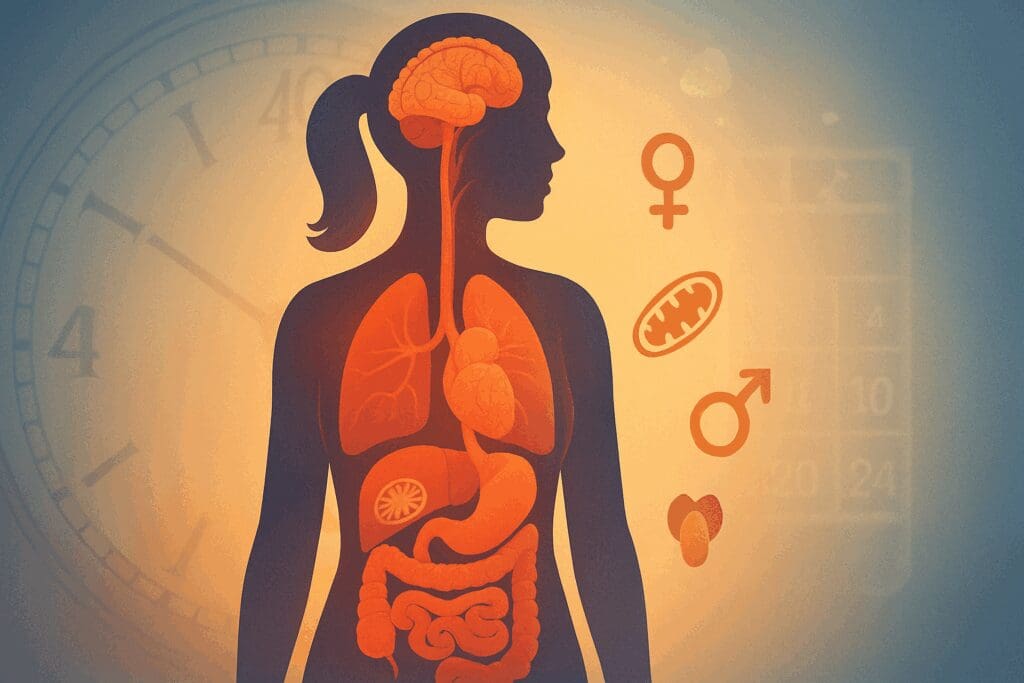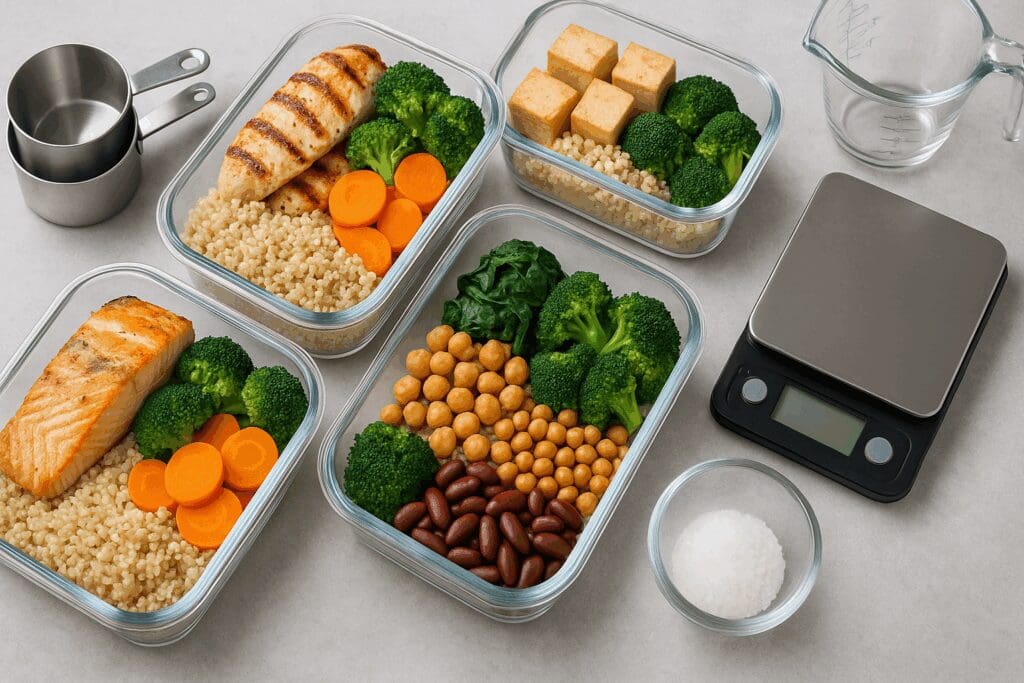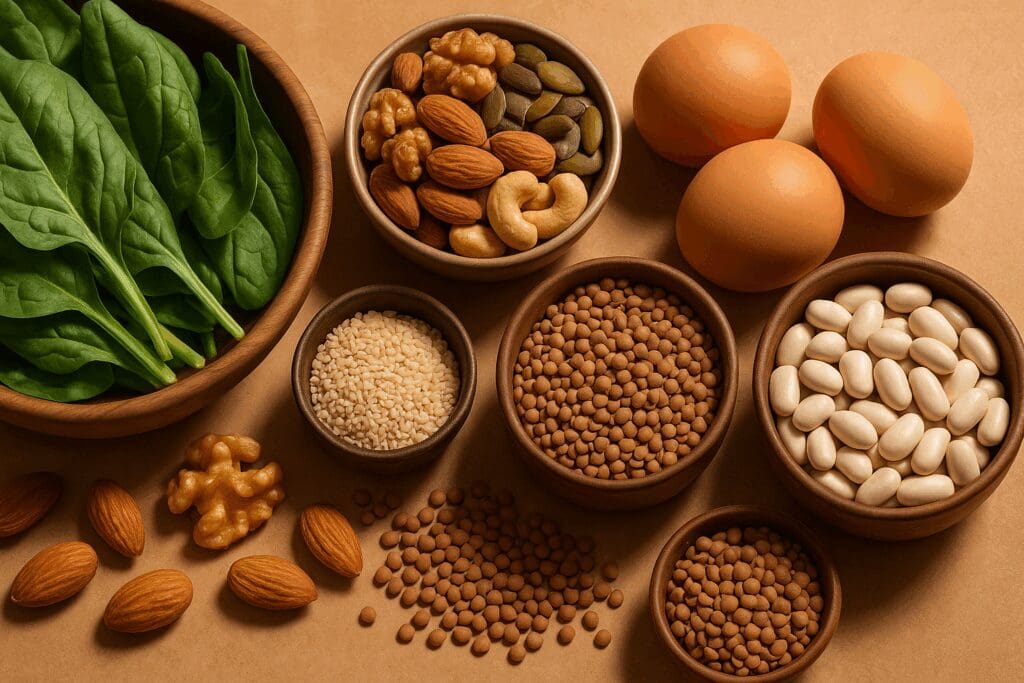Aging brings wisdom, experience, and a deeper understanding of self—but for many women, it also brings unwelcome changes in metabolism. As women cross the threshold into their 40s, they often notice that the same diet and exercise routines no longer produce the same results. Hormonal fluctuations, muscle mass loss, and a slowing metabolic rate combine to create a perfect storm that can make maintaining a healthy weight and energy levels increasingly challenging. Understanding how to boost metabolism after 40 is essential not only for aesthetic reasons but for long-term health, vitality, and disease prevention.
This comprehensive nutritional guide dives deep into the science and strategy of optimizing metabolism for women in their 40s and beyond. It is designed to empower readers with evidence-based information, practical tools, and a clear understanding of the body’s evolving needs, ensuring that women can feel confident, strong, and energized at every stage of life.
You may also like: The Ultimate Guide to Essential Vitamins for Over 40 Women

Understanding Metabolism and Its Role After 40
To grasp how to increase metabolism after 40, it is crucial first to understand what metabolism is and how it works. Metabolism refers to the complex network of chemical processes that your body uses to convert the food you eat into energy. This energy is necessary for everything from breathing and circulating blood to repairing cells and regulating temperature. Your basal metabolic rate (BMR) accounts for the majority of your calorie expenditure and is influenced by age, muscle mass, hormonal balance, and genetics.
As women age, particularly after 40, BMR begins to decline due to a natural reduction in muscle mass and changes in hormone levels, especially estrogen. These physiological shifts can lead to weight gain, decreased energy, and changes in body composition even if diet and activity levels remain the same. Compounding the issue, perimenopause and menopause bring about insulin resistance and a tendency for fat to accumulate around the midsection.
However, this doesn’t mean that a sluggish metabolism is inevitable. By strategically addressing nutrition, lifestyle, and activity patterns, women can reverse or at least mitigate these metabolic changes and optimize their health outcomes. It all begins with the right dietary foundation.

The Foundation of a Metabolism-Boosting Diet
Nutrition is a powerful tool in the quest to rejuvenate metabolic function. The foundation of how to boost metabolism after 40 lies in adopting a diet that supports hormonal harmony, maintains muscle mass, and sustains energy throughout the day. Protein takes center stage in this equation. As women age, their bodies become less efficient at synthesizing protein into muscle, making adequate protein intake essential to preserve lean mass and promote fat loss.
Incorporating high-quality protein sources such as lean poultry, fish, tofu, legumes, and Greek yogurt into each meal stabilizes blood sugar and supports satiety. Spreading protein intake evenly across meals, rather than front-loading or back-loading it, ensures a consistent metabolic response throughout the day. For optimal muscle protein synthesis, experts recommend aiming for 25 to 30 grams of protein per meal.
Alongside protein, dietary fiber from vegetables, fruits, whole grains, and legumes plays a critical role in metabolism. Fiber not only aids digestion and improves gut health—which has direct links to metabolic regulation—but also slows carbohydrate absorption, minimizing insulin spikes and reducing fat storage. A diet rich in antioxidants and anti-inflammatory compounds, such as flavonoids from berries or polyphenols from olive oil, can further enhance metabolic health by countering oxidative stress that worsens with age.

Powerful Micronutrients That Support Metabolism
Beyond macronutrients, certain vitamins and minerals have profound effects on metabolic efficiency. One such group is the B vitamins, including B6, B12, and folate, which are involved in energy production at the cellular level. These nutrients assist in the conversion of food into usable energy and help regulate homocysteine levels, an amino acid that, when elevated, is associated with inflammation and chronic disease.
Iron is another crucial element, particularly for women who may still experience menstruation into their early 40s. Iron supports oxygen transport and energy metabolism. A deficiency can lead to fatigue, decreased endurance, and impaired muscle function—all of which dampen metabolic output. Iron-rich foods like spinach, lentils, and red meat, or iron supplements when needed, help maintain metabolic vitality.
Magnesium, zinc, and selenium also deserve attention. Magnesium supports over 300 enzymatic reactions, including those involved in glucose metabolism. Zinc is vital for immune function and appetite regulation, while selenium contributes to thyroid hormone synthesis, which directly affects metabolic rate. Including a variety of nuts, seeds, whole grains, and seafood ensures adequate intake of these micronutrients.

How to Boost Metabolism After 40 with Strategic Meal Timing
Meal timing has gained prominence as an effective strategy in how to boost metabolism after 40. While calorie content remains important, when and how often you eat can significantly influence metabolic performance. Intermittent fasting (IF), particularly time-restricted eating, has emerged as a popular method for optimizing metabolism without reducing nutrient intake.
Restricting food intake to a window of 8 to 10 hours per day may enhance insulin sensitivity, reduce inflammation, and support fat oxidation. However, IF is not suitable for everyone, particularly women with a history of disordered eating or hormonal imbalances. In such cases, eating small, frequent meals every 3 to 4 hours can be equally effective. This approach prevents blood sugar crashes, reduces cravings, and promotes stable energy levels.
Breakfast remains a cornerstone of metabolic health. Studies show that individuals who consume a balanced breakfast rich in protein and fiber tend to have improved glucose control and reduced appetite later in the day. Skipping breakfast can trigger cortisol release, contributing to abdominal fat accumulation and metabolic dysfunction. A breakfast of eggs, avocado, and whole-grain toast or a protein smoothie with leafy greens can kickstart metabolism in the morning.

Balancing Macronutrients for Sustained Energy
Achieving a balanced ratio of macronutrients—proteins, fats, and carbohydrates—is essential to increase metabolism after 40. Carbohydrates often get vilified in the world of weight management, but complex carbs are indispensable for fueling the brain and muscles, especially during exercise. The key is to focus on low-glycemic carbohydrates such as quinoa, oats, sweet potatoes, and legumes, which release energy gradually and support insulin sensitivity.
Healthy fats, particularly omega-3 fatty acids, contribute to metabolic health by reducing inflammation and supporting hormone production. Fat also aids the absorption of fat-soluble vitamins like A, D, E, and K. Including sources such as walnuts, flaxseeds, fatty fish, and olive oil in moderation ensures these benefits without excess caloric load.
Protein, as mentioned, is the metabolic hero. Beyond muscle preservation, protein has the highest thermic effect of food (TEF), meaning the body expends more energy digesting it compared to fats or carbs. This thermogenic property adds to the calorie-burning potential of a protein-rich diet, supporting efforts to increase metabolism after 40 without drastic caloric restriction.
Hydration: The Overlooked Metabolic Ally
While often underestimated, hydration plays a critical role in metabolic efficiency. Water is required for nearly every metabolic process, from cellular respiration to nutrient transport. Mild dehydration can impair cognitive function, decrease energy levels, and slow metabolism. In fact, studies have shown that drinking 500 ml of water can increase resting energy expenditure by up to 30% for about an hour.
For women over 40, water becomes even more essential due to hormonal shifts that affect fluid balance and thermoregulation. Ensuring consistent hydration throughout the day—rather than drinking large quantities all at once—keeps metabolic processes running smoothly. Adding a pinch of sea salt or a splash of lemon can enhance electrolyte balance and promote absorption.
Herbal teas such as green tea and oolong tea offer additional metabolic support. Rich in catechins and caffeine, these teas have been linked to increased fat oxidation and improved metabolic rate. Replacing sugary drinks with herbal infusions not only cuts unnecessary calories but also provides antioxidant benefits.

How to Boost Metabolism After 40 Through Exercise and Strength Training
Physical activity is a cornerstone in any discussion of how to boost metabolism after 40. While cardiovascular exercise supports heart health and calorie expenditure, strength training is particularly vital for preserving and building muscle mass, which is directly tied to resting metabolic rate.
Muscle tissue is metabolically active, meaning it burns calories even at rest. As estrogen levels decline in midlife, muscle loss accelerates unless actively countered with resistance exercises. Incorporating strength training two to three times per week, focusing on major muscle groups, can significantly improve metabolic function and body composition.
High-intensity interval training (HIIT) also offers unique metabolic advantages. Alternating short bursts of intense activity with periods of rest or low-intensity movement can elevate post-exercise oxygen consumption (EPOC), leading to prolonged calorie burn even after the workout ends. For women with joint concerns, low-impact variations like cycling or elliptical-based HIIT can be effective.
Non-exercise activity thermogenesis (NEAT), which includes all movements outside of structured exercise, also contributes meaningfully to daily calorie burn. Taking the stairs, standing while working, or walking while on calls are simple yet effective ways to keep metabolism engaged throughout the day.
The Influence of Sleep and Stress on Metabolism
No nutritional guide would be complete without addressing the role of sleep and stress management. Both factors exert profound effects on hormones that regulate appetite, energy use, and fat storage. Chronic stress elevates cortisol, a hormone that encourages fat deposition, especially around the abdomen. It also impairs insulin sensitivity and disrupts sleep—creating a vicious cycle of fatigue, cravings, and weight gain.
Quality sleep, on the other hand, supports hormonal balance and metabolic regulation. During deep sleep, the body repairs tissues, produces growth hormone, and resets insulin sensitivity. Women over 40 may experience disrupted sleep due to hormonal fluctuations, making it even more essential to establish a calming bedtime routine and create a sleep-conducive environment.
Limiting caffeine intake after noon, reducing blue light exposure in the evening, and incorporating relaxation practices such as meditation or journaling can improve sleep quality. Prioritizing rest is not a luxury but a metabolic necessity, particularly for women navigating the complex hormonal transitions of midlife.
Supplements That May Help Increase Metabolism After 40
While whole foods should form the foundation of metabolic health, certain supplements may provide targeted support. Protein powders, such as whey, casein, or plant-based blends, can help women meet their daily protein needs, especially post-workout or during busy mornings. Creatine monohydrate, although commonly associated with male athletes, is equally beneficial for women seeking to preserve muscle mass and improve strength.
Vitamin D is another crucial supplement, particularly for women in northern climates or those with limited sun exposure. Deficiency is associated with insulin resistance, fatigue, and increased risk of metabolic syndrome. A simple blood test can determine need and appropriate dosage.
Other potentially beneficial supplements include magnesium glycinate for relaxation and metabolic support, omega-3 fatty acids for inflammation control, and adaptogens like ashwagandha or rhodiola for stress modulation. Always consult with a healthcare professional before adding new supplements, especially if managing existing health conditions or medications.
Lifestyle Synergy: The Cumulative Effect on Metabolic Health
Optimizing metabolism is not about any one food, workout, or habit—it is the synergistic effect of many small, consistent actions. When nutrient-dense meals are paired with regular strength training, restorative sleep, mindful eating, and stress reduction, the body responds with increased vitality, resilience, and metabolic efficiency.
This holistic perspective is essential when exploring how to increase metabolism after 40. It is not about chasing a quick fix or adhering to a rigid program. Rather, it is about honoring the body’s changing needs, embracing the wisdom that comes with age, and making informed, empowered choices each day. The journey to metabolic health is a dynamic one, and it evolves just as we do.
Frequently Asked Questions: Advanced Nutritional Strategies for Women Over 40
How to Boost Metabolism After 40 When You Have a Sedentary Job
If you work in an office or spend long hours at a desk, it’s still possible to learn how to boost metabolism after 40 by incorporating subtle but impactful daily habits. Begin by integrating micro-movements into your routine—standing during phone calls, walking during virtual meetings, or using a desk treadmill can increase your non-exercise activity thermogenesis (NEAT). Consistent NEAT can contribute significantly to daily energy expenditure without formal workouts. Additionally, consider scheduling short strength-based movement sessions, such as 5-minute resistance band exercises every few hours, to counteract the effects of prolonged sitting. Beyond movement, keeping your water intake steady and avoiding ultra-processed vending machine snacks also supports metabolic efficiency in low-activity environments.
Does Hormone Replacement Therapy (HRT) Affect Metabolic Rate in Women Over 40?
Yes, hormone replacement therapy can play a role in metabolic health, but its effects vary depending on individual hormonal profiles and overall lifestyle. Estrogen therapy, particularly during the early stages of menopause, may help stabilize fat distribution and support insulin sensitivity, which in turn may enhance metabolism. However, HRT is not a standalone solution for how to increase metabolism after 40. Its effectiveness is amplified when paired with proper nutrition, strength training, and sleep hygiene. Women considering HRT should undergo a comprehensive hormonal panel and consult with a healthcare provider specializing in midlife wellness to determine if this intervention aligns with their personal health goals.
Can Stress-Induced Cortisol Spikes Lead to Long-Term Metabolic Sluggishness?
Chronic stress is one of the most underestimated factors that influence metabolic function, especially for women over 40. Elevated cortisol levels over time can promote abdominal fat storage, suppress thyroid function, and disrupt sleep, all of which negatively impact the body’s ability to efficiently metabolize nutrients. Learning how to boost metabolism after 40 must include active stress management techniques such as diaphragmatic breathing, progressive muscle relaxation, or even short nature walks. Additionally, emerging studies suggest that mind-body practices like qigong and forest bathing can restore parasympathetic nervous system activity, which helps regulate stress-related metabolic dysfunctions. Tackling stress as a metabolic disruptor requires both daily mindfulness and long-term self-regulation strategies.
How Can Gut Health Influence the Ability to Increase Metabolism After 40?
Recent research has shown that gut microbiome diversity plays a critical role in metabolic flexibility, which is the body’s ability to efficiently switch between burning carbs and fats for energy. Women seeking to understand how to increase metabolism after 40 should look beyond calorie counting and evaluate their digestive health. Fermented foods such as kefir, sauerkraut, and miso, alongside prebiotic fibers like asparagus and chicory root, help cultivate a gut environment conducive to fat oxidation and nutrient assimilation. Dysbiosis, or microbial imbalance, can contribute to insulin resistance and low-grade inflammation, both of which suppress metabolic rate. Personalized gut testing and the guidance of a nutrition-trained practitioner can help fine-tune dietary adjustments that support optimal microbial diversity and metabolism.
How to Boost Metabolism After 40 Without Traditional Cardio Workouts
For women who dislike jogging or high-impact cardio, there are alternative ways to maintain cardiovascular health and stimulate metabolic activity. Low-impact but high-intensity activities such as kettlebell swings, rowing, or rebounding (mini-trampoline workouts) can yield similar metabolic benefits as running but with less strain on the joints. Functional strength circuits and compound lifts engage multiple muscle groups, increasing calorie burn while preserving muscle mass. Understanding how to boost metabolism after 40 also includes recognizing that recovery is just as vital—especially for women dealing with adrenal fatigue or perimenopausal symptoms. Incorporating active recovery like mobility flows or slow-paced yoga enhances lymphatic circulation, reduces inflammation, and indirectly supports long-term metabolic resilience.
Are There Specific Lab Markers to Track When Trying to Increase Metabolism After 40?
Monitoring key biomarkers can offer personalized insights into metabolic health and guide interventions more effectively. Thyroid function tests (TSH, free T3, and free T4) are foundational, especially as thyroid performance tends to decline in midlife. Other important metrics include fasting insulin, hemoglobin A1C, C-reactive protein (CRP), and vitamin D levels. These indicators help assess glucose regulation, systemic inflammation, and micronutrient status—all of which influence how efficiently your body burns energy. Additionally, checking testosterone and DHEA-S can help determine if hormonal deficiencies are stalling metabolic progress. When exploring how to increase metabolism after 40, incorporating these data points ensures that your efforts are not only targeted but also measurable.
What Role Do Social Habits and Community Play in Metabolic Health?
Metabolism isn’t purely a biological process—it’s also influenced by behavior, psychology, and even social interaction. Studies have found that individuals who eat in a communal setting tend to make healthier food choices, eat more slowly, and experience improved digestion. Social accountability, whether through group fitness, shared meals, or wellness challenges, can also enhance adherence to metabolism-boosting habits. Loneliness, on the other hand, has been linked to higher levels of cortisol and systemic inflammation, both of which slow metabolism. If you’re working on how to increase metabolism after 40, consider integrating support systems like health coaches, walking groups, or online wellness communities to enhance motivation and reduce stress-induced barriers.
How Can Travel or Irregular Schedules Impact a Woman’s Metabolic Rhythm After 40?
Frequent travel or shift work can create disruptions in circadian rhythm, which in turn affects hormones that regulate hunger, energy expenditure, and sleep. Jet lag, late meals, and inconsistent sleep schedules reduce leptin (satiety hormone) and increase ghrelin (hunger hormone), leading to overeating and decreased metabolic efficiency. Women learning how to boost metabolism after 40 in this context should prioritize light exposure in the morning, meal timing that aligns with local daylight hours, and grounding routines like stretching or journaling. Portable protein snacks and herbal teas can help maintain nutritional consistency when dining options are limited. Strategic napping and magnesium supplementation may also mitigate the adverse metabolic effects of time zone disruptions.
Is It Possible to Rebuild Muscle Mass Significantly After 40 to Improve Metabolism?
Absolutely. Muscle protein synthesis does slow down with age, but the body remains highly responsive to strength training and adequate protein intake. Women often underestimate their capacity to build muscle post-40, partly due to outdated myths about bulking. Progressive overload training—where you gradually increase resistance—combined with consuming 1.2 to 1.6 grams of protein per kilogram of body weight daily, can produce significant gains in lean body mass. This, in turn, raises resting energy expenditure, providing a sustainable way to increase metabolism after 40. Consistency, recovery, and periodization (planned variation in training intensity) are key to optimizing gains while minimizing injury risk.
How Do Environmental Toxins and Endocrine Disruptors Affect Midlife Metabolism?
Exposure to environmental toxins, particularly endocrine-disrupting chemicals (EDCs) found in plastics, pesticides, and personal care products, can interfere with hormonal regulation and metabolic rate. These substances mimic or block natural hormones like estrogen and thyroid hormone, leading to weight gain, fatigue, and insulin resistance. Women focused on how to boost metabolism after 40 should consider minimizing contact with EDCs by switching to glass food containers, choosing organic produce, and using fragrance-free skincare. Even small changes, such as avoiding receipts coated in BPA or filtering tap water, can reduce toxic load. Detoxification doesn’t require extreme diets; rather, supporting the liver with cruciferous vegetables and staying hydrated is often more effective and sustainable.
A Renewed Path Forward: Embracing Change with Confidence
Reaching your 40s is not a metabolic death sentence—it is an invitation to reimagine health through the lens of nourishment, strength, and balance. Armed with the knowledge of how to boost metabolism after 40, women can reclaim their energy, confidence, and joy. This guide has offered an evidence-based roadmap grounded in nutritional science, practical strategies, and real-world application.
Whether you are just beginning to notice shifts in your body or have been navigating these changes for years, it is never too late to take control. By embracing a high-protein, fiber-rich diet, prioritizing strength training, managing stress, staying hydrated, and supporting hormonal harmony, you lay the foundation for lifelong metabolic wellness.
There is power in understanding your body’s evolving needs. With that power comes the ability to make choices that not only support your metabolism but enhance every facet of your well-being. Aging is inevitable, but how we fuel and move our bodies can define how vibrant, energetic, and resilient we remain along the way. Let this be your ultimate guide to thriving—not just surviving—after 40.
Further Reading:
It’s not your age that’s slowing your metabolism, new research says. Here’s what to do



